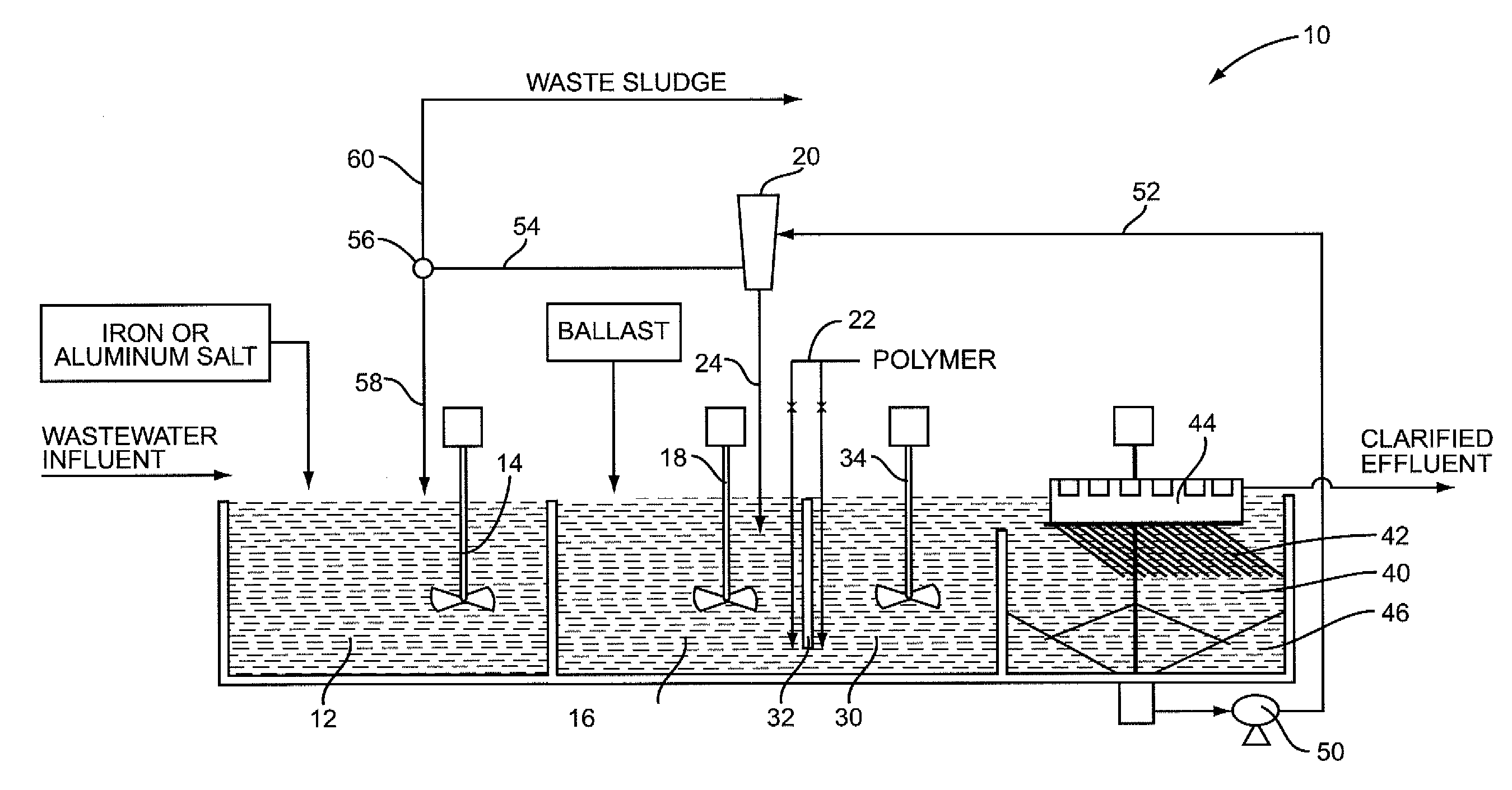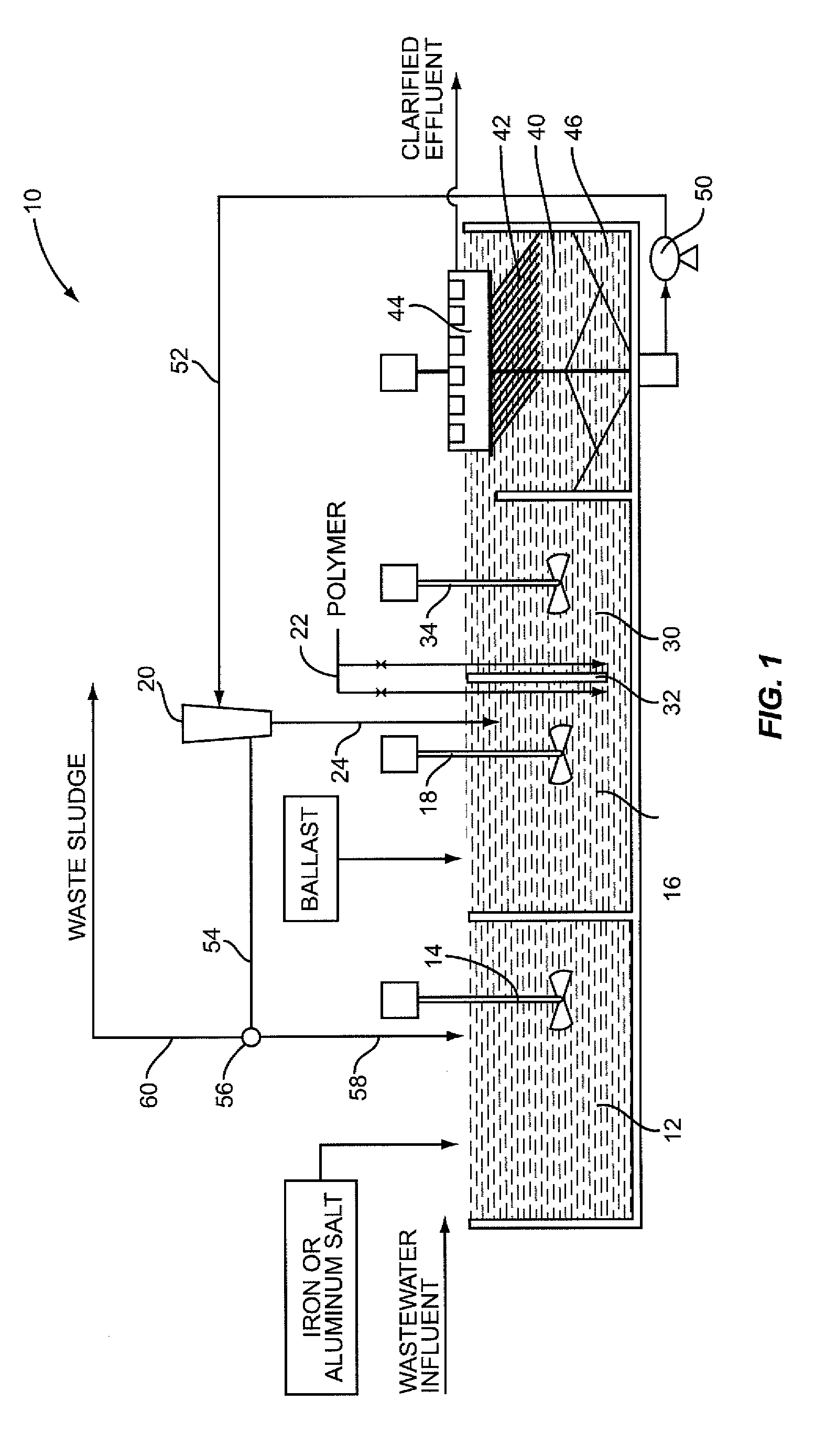Method of Removing Phosphorus from Wastewater
a technology of phosphorus removal and wastewater, applied in biological water/sewage treatment, multi-stage water/sewage treatment, separation process, etc., can solve the problems of inability to achieve such low-level phosphorus reduction by conventional chemical precipitation, drawbacks and disadvantages of chemical treatment, etc., and achieve the effect of reducing increasing the concentration of iron or aluminum phosphorus adsorption species
- Summary
- Abstract
- Description
- Claims
- Application Information
AI Technical Summary
Benefits of technology
Problems solved by technology
Method used
Image
Examples
example
[0026]In this example, the flow of the influent wastewater is 1 MGD and includes a total phosphorus concentration of 2.5 mg / l. The iron salt selected is ferric chloride and the dosage of ferric chloride is based on a ratio of Fe+3 to total phosphorus of approximately 10:1. Further, based on the water chemistry and the dosage of ferric chloride, it is determined that the addition of the ferric chloride results in the precipitation of 50 mg / l of solids. This, for a 1 MGD operation, will result in approximately 417 lbs of precipitated solids per day. Keep in mind that this amount of solids does not include suspended solids in the wastewater prior to treatment with the ferric chloride. Thus, using 20 as a multiplier it is desirable to achieve a sludge recycle rate that will recycle 8,345 lbs of solids per day. Assuming a sludge concentration of 1% solids, a recycle rate of approximately 100,000 gal / day will yield approximately 8,345 lbs of solids per day. With a recycle rate of 100,000 ...
PUM
| Property | Measurement | Unit |
|---|---|---|
| concentrations | aaaaa | aaaaa |
| concentration | aaaaa | aaaaa |
| concentration | aaaaa | aaaaa |
Abstract
Description
Claims
Application Information
 Login to View More
Login to View More - R&D
- Intellectual Property
- Life Sciences
- Materials
- Tech Scout
- Unparalleled Data Quality
- Higher Quality Content
- 60% Fewer Hallucinations
Browse by: Latest US Patents, China's latest patents, Technical Efficacy Thesaurus, Application Domain, Technology Topic, Popular Technical Reports.
© 2025 PatSnap. All rights reserved.Legal|Privacy policy|Modern Slavery Act Transparency Statement|Sitemap|About US| Contact US: help@patsnap.com


